The People’s Game Part Two: Brazil Rejects Neo-Liberal Soccer
What FIFA has imposed on Brazil is a kind of soccer that is nearly unrecognizable, and thus heretical, to the people who have, over the course of more than a century, made the sport into a national religion. A masked protester holds a banner that reads in Portuguese "There won't be a Cup" during a demonstration against money spent on the preparations for the World Cup soccer tournament. AP/Andre Penner
A masked protester holds a banner that reads in Portuguese "There won't be a Cup" during a demonstration against money spent on the preparations for the World Cup soccer tournament. AP/Andre Penner
By Alan Minsky and Meleiza FigueroaThis is the second of a three-part series on the political, economic and athletic struggles of the 2014 World Cup. The first installment, which can be read here, dealt with the history of global soccer. This piece addresses the social and political upheaval in Brazil prompted by the outrageous cost of putting on such a grand global show. Part three has just been published here. Copa pra quem? Contesting the spectacle in the land of the ‘beautiful game’
Perhaps nowhere else is the bitter pill of neoliberal soccer’s political economy harder to swallow than in this year’s World Cup host country. In a land full of contradictions, the protests that rocked Brazil during the Confederations Cup tournament in 2013, and continue into the 2014 World Cup, dramatically express how the longstanding fractures and fault lines in Brazilian society have been brought to the breaking point.
To the international observer, the protests most obviously illustrate an extreme disconnect between the internal problems of what is still one of the most unequal societies on the planet, and Brazil’s external projections to the outside world. Following the lead of fellow BRICS powers (Russia, India, China and South Africa), Brazil’s hosting of mega-sports events such as the 2014 World Cup and 2016 Olympics is intended to herald its arrival as a major economic power on the international scene. Its gleaming new stadiums and elaborate urban infrastructure projects are meant as prime showpieces of what, as they say in Brazil, is para o inglés ver (literally, “for the English-speakers to see”). Behind the stage curtain — as in so many places around the world — are crumbling schools and hospitals, worker deaths, mass displacements, and a level of police violence and militarization that would turn any 1970s Latin American dictatorship green with envy.
It can also be seen as the contradictory result of a decade in which Brazil’s ruling Workers’ Party (PT) has attempted to triangulate its obligations to international financial capital and its traditional political base of social movements, workers and the poor. When former PT President Lula da Silva took power in 2003, his answer to the most acute economic inequality in the world was to implement “cheap and easy” social policies to uplift the poorest of the poor (such as the famed Bolsa Familia welfare program), while at the same time maintaining a favorable financial environment for the environmentally and socially rapacious schemes of national and international investors.
But this is not the simple neoliberal story of a national government held captive to the dictates of international financial institutions. It is perhaps no accident that the choice of World Cup host cities — such as Manaus, the center of Brazil’s 19th century rubber boom, or Cuiabá, the seat of its contemporary soy empire — parallel sites of the nationalist “poles of development” strategies espoused by Brazil’s ruling generals in the 1970s. Likewise, within these cities, the stadiums themselves serve as poles for massive urban gentrification schemes that have displaced hundreds of thousands of poor residents, and threaten the livelihoods of thousands more.
While the PT’s social policies have indeed lifted millions out of absolute poverty (solidifying party loyalty from the PT’s popular base of slum dwellers and the rural poor), it has come not at the expense of capital and the Brazilian oligarchy, but from factions of the middle class who have fallen through the economic and political cracks between the government’s two primary constituencies. Thus, the 2013 protests have been characterized as a revolt not primarily of poor people (although they are a significant force, especially in areas where they are being violently displaced for World Cup projects), but of the urban middle class — especially the precarious lower strata of students and workers who find themselves increasingly squeezed by the PT’s economic orientations and, as Brazil’s spectacular growth has slowed, its recent turn to austerity. For some sectors of Brazilian society, the fight is not simply against an inept or corrupt government, but to deepen the social revolution envisioned by the workers, peasants, environmentalists, indigenous communities and other movements that formed the Workers’ Party in the first place.
Given all these tensions, it is still quite an incredible thing to hear, within Brazil, the phrase coming out of so many mouths: “não vai ter copa” (“there will be no Cup”). The awe-inspiring passion and quasi-religious fervor with which Brazilians are so stereotypically associated with soccer have real roots that run as thick and deep as blood. Even the most rabid, car-flipping sports riot in the U.S. is no match for the generalized, absolutely electric atmosphere that envelops Brazilian cities when the jogão, or “big game,” is on. In the arenas, plastic bags full of confetti and toilet paper rolls circulate among the crowd, creating its own grass-roots spectacle at key moments in the game; and the deafening roar from the stands after a goal is as loud as the air is thick with sweat, song and flare smoke. Outside, one can’t help but be swept up in the ecstatic carnival that erupts throughout the bairros when the favored team wins: street corners awash in exuberant cheers, spontaneous samba circles and free-flowing Skol beer; whole busloads of people literally rocking the buses with songs, chants and dancing in the aisles; and the ubiquitous pop-pop-pop of fireworks in the favelas, going late into the night.This football fever isn’t simply about the game; it is a product of the ways in which futebol is fundamentally articulated with the social and political currents that flow throughout the stadiums and spill onto the streets. Many of the most intense club rivalries in Brazil — such as Corinthians vs. Palmeiras in São Paulo, the “Fla-Flu” derby between Flamengo and Fluminense in Rio, and Bahia vs. Vitória in the northeastern, majority Afro-descendent metropolis of Salvador — cleave easily along the lines of the nation’s social divisions. Indeed, many of the most popular teams in Brazil, such as Flamengo, Bahia and, famously, Corinthians (the timão do povo, or “team of the people”), are embraced as champions of the poor and working classes against the teams of the elite.
During the dictatorship years, the cultural arenas of samba and soccer were often the only spaces in which the liberatory aspirations of the masses could be expressed; and politically savvy footballers, such as Socrates, the legendary Corinthians captain of the 1980s, played explicitly to this political reality. The revolutionary populism of Brazilian soccer finds expression to this day in its canções da torcida (fan songs); a prime example is the call-and-response refrain of the Corinthians’ infamous hooligan organization, the Gaviões de Fiel:
Contra todo ditador que no timão quiser mandar Os gaviões nasceram para poder revindicar! O direito da fiel que paga ingresso sem parar Não temos medo de acabar! Corinthians joga eu vou estar lá Nossa corrente é forte e jamais se quebará Pelo Corinthians, com muito amor, até o fim!
(Against every dictator that wants to make the team submit The Gaviões were born to take back the power! The right of the faithful who pay the price will never stop We are not afraid to end it! Corinthians play, I will be there Our current is strong and will never be broken For Corinthians, with much love, until the end!)
This may, in part, explain why the FIFA-mediated corporate spectacle of the 2014 World Cup is intensely rejected by so many of the very people who are expected to embrace it. In multiple aspects extending beyond the political and economic upheavals, to the physical spaces, style of play, sociocultural articulations and even market culture of the tournament itself, what FIFA intends to impose on Brazil is a kind of soccer that is nearly unrecognizable, and thus heretical, to the people who have, over the course of more than a century, made the sport into a national religion.
In this way, it can be read as a cultural as well as economic and political struggle, one in which the domination of a sterile, homogeneous, TV-ready corporate “sports” culture threatens the erasure of futebol as a popular national phenomenon inseparable from its social history, a physical poetics of art and resistance so revered by Brazilians that its sheer beauty, and power to uplift the powerless, is offered as evidence that “Deus é brasileiro” (God is Brazilian).
What is at stake, therefore, is not only the tournament’s actual presence in Brazil, but also a contest over the social context and meaning of the game itself. There will be not one, but two global games at play in Brazil this summer: a fateful collision of the sanitized, militarized spectacle curated by the transnational institutions of FIFA, corporate media and global capitalist elites against the living, breathing, collective soul of the “beautiful game” that exists in the hearts, minds and bodies of poor and working-class people in Brazil and around the world.
Meleiza Figueroa is a doctoral candidate in geography at UC Berkeley who is doing her dissertation research in Brazil. Alan Minsky is program director of KPFK Radio in Los Angeles, and a frequent contributor to Truthdig. They are the co-producers of “The People’s Game” radio show, which can be listened to live each Wednesday during the World Cup at kpfk.org. Show archives and daily podcasts will be available online at thepeoplesgame.org.
Your support matters…Independent journalism is under threat and overshadowed by heavily funded mainstream media.
You can help level the playing field. Become a member.
Your tax-deductible contribution keeps us digging beneath the headlines to give you thought-provoking, investigative reporting and analysis that unearths what's really happening- without compromise.
Give today to support our courageous, independent journalists.
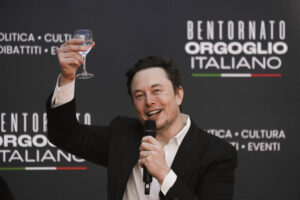
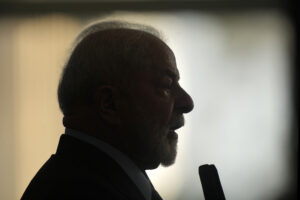
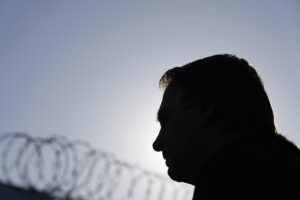
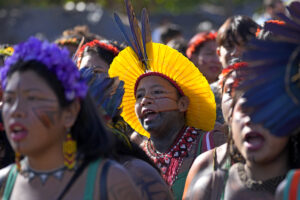
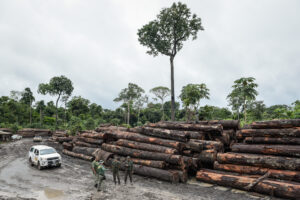

You need to be a supporter to comment.
There are currently no responses to this article.
Be the first to respond.